

Technology
Since the dawn of human history, human beings have used and studied technology. Technology is very important, because it deals with the development and sustenance of society and civilizations. From the Great Pyramids and other temples to modern skyscrapers today, humanity relied on technology, science, algebra, trigonometry, calculus, and other skills to make awe inspiring structures a reality. In our generation, there is the growth of green technology and the importance of STEM fields. Many young people are learning about coding and molecular biology too. All of the concepts are vital, because we need STEM fields and the development of tech jobs in order for us to further cultivate an advanced civilization.
In the 21st century, we live in a new era. We have computers that are small in size, but have massive computing power. We have satellites, and underwater vehicles which can travel long distances. We live in a world where Instagram, Facebook, Twitter, Tumblr, Scribd, Snapchat, and other diverse social media formats allow people internationally to communicate with each other simultaneously. We have massive amount of futuristic devices that detect sound, measure distance, gauge electrical power (in the realm of ohm, volt, watt, etc.), decipher temperature, and create beautiful art too. That is why it is important for us to understand mathematics. Mathematics is how we measure the physical travel of particles, how we count money, and how we gauge power in physics among many circumstances. We should encourage always the youth and adults to pursue fields in technology if they desire too. We certainly need more plumbers, architects, electricians, builders, teachers, historians, social activists, computer science experts, and other tech experts which enrich the world in general. Some of our greatest inventors in human history used determination, a love of STEM fields, and dedication to achieve their goals. Anyone, regardless of their color, nationality, creed, or sex, have the right to develop and use technology in enumerable, positive avenues.

Maglev
Maglev and other high speed traveling vessels are international. Maglev are vehicles in the cutting edge of travel and the transport of supplies in the globe. They exist in America, Europe, Asia, and in other places of the world too. High speed vehicles can make journeys last much shorter than using conventional buses or trains. Some high speed rail travel by Maglev and others travel by electricity too. Some travel faster than 250 mph. The first of such systems in the modern age operated in Japan as early as 1964. It was called the bullet train. Usually, high speed trains operate on a standard gauge tracks of continuously wielded rail on grade separated right of way that incorporates a large turning radius in its design. Some high speed trains have passengers and others carry freight service. Back in 1899, high speed development started in Germany. There was the Prussian state railway joined with 10 electrical and engineering firms. They electrified 45 miles of military owned railways between Marienfelde and Zossen. The line used a three phase current at 10 kilovolts and 45 Hz. The Van der Zypen & Charlier company of Deutz, Cologne built two railcars, one fitted with electrical equipment from Siemens-Halske, the second with equipment from Allgemeine Elektricitäts-Gesellschaft(AEG), that were tested on the Marienfelde–Zossen line during 1902 and 1903. On October 23, 1903, the S&H-equipped railcar achieved a speed of 206.7 km/h (128.4 mph) and on October 27th, the AEG-equipped railcar achieved 210.2 km/h (130.6 mph). These trains demonstrated the feasibility of electric high-speed rail. However, regularly scheduled electric high-speed rail travel was still more than 30 years away.
Back then, electric railroads existed. Yet, the cost and disasters delayed high speed trail systems. In America, there were fast speed trains in America. Extensive wind tunnel research – the first in the railway industry – was done before J.G.Brill in 1931 built the Bullet cars for Philadelphia (P&W). They were capable to run at 92 mph. By the 1950’s, faster trains existed. The modern high speed rail service was developed by Japan. Japan back then had 45 million people and Tokyo plus Osaka was densely populated. Shinji Sogō, President of Japanese National Railways, insisted strongly on the possibility of high-speed rail, and the Shinkansen project was implemented. A test facility for rolling stock, now part of the line, opened in Odawara in 1962. The Tōkaidō Shinkansen began service on October 1, 1964, in time for the Olympics. The Shinkansen system was expanded and passengers traveled in the system too. They traveled almost 200 mph. It has improved over the years in terms of line speeds, noise control, aerodynamic drag, braking systems, and other parts of its infrastructure. By the 1960’s, high speed train systems were developed in Europe and America.
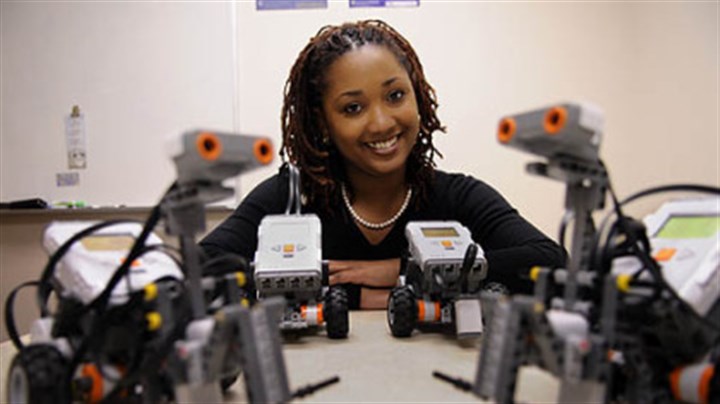

STEM Fields (and coding)
Coding is part of the present and the future. What is coding? Coding is the technique and the processes on how human beings can create computer software, apps, and websites. It uses different browsers, the OS, apps, the phone, Facebook, and other functions. Some coding can be simple as writing in Python language to print ‘Hello, world!” Other coding can be more complex. Coding in essence is computer programming. Expressing a tweet and using debit card involve coding. Many everyday items have computers like microwaves, cars, etc. Coding include instruments that computers can understand. The instruments have to be precise. Computers need instruments in order to function like a recipe is used to cook food. Many forms of computer languages include the following: Python, C++, Perl, Touch Develop, and Visual Basic. Each of these computer languages are different in their own ways. These languages are similar to different languages that human beings express verbally like English, Spanish, French, Swahili, Italian, Chinese, etc. Coding is like a language. The grammar of coding is called syntax. One example is how in English the sentence of “Set lives in the game to 3” can be equal to the coding of “game ->set life (3).” This means that you have 3 lives in a games and after those 3 lives the game is over. This code has a noun which is game. The noun in coding is called the object. There are other objects in the game too. The verb is called function in the coding example is called “Set lives.” The information we give the function is the parameter. 3 in parenthesis the parameter, because there are 3 lives in the game.
Computers function by transistors (or switches) going on and off. Binary code is the representation of these combinations as 1s and 0s, where each digit represents one transistor. Binary code is grouped into bytes, groups of 8 digits representing 8 transistors. For example, 11101001. Modern computers contain millions or even billions of transistors, which means an unimaginably large number of combinations. Programming languages help to organize massive combinations of transitions found in computing systems. Any programming language has a group of syntax rules that define how code should be written or formatted. Low level language is similar to a binary code a computer understands. High level languages are less similar to a binary code. High-level languages are easier to program in, because they’re less detailed and designed to be easy for us to write. Nearly all of the main programming languages in use today are high-level languages. A program is a text file written in certain coding language. Coding language must translate its source code into assembly language, a super low-level language that uses words and numbers to represent binary patterns. Depending on the language, this may be done with an interpreter (where the program is translated line-by-line), or with a compiler (where the program is translated as a whole). More people are using coding, like black people, people of color, girls, women, young people in general, young people, older people, etc.
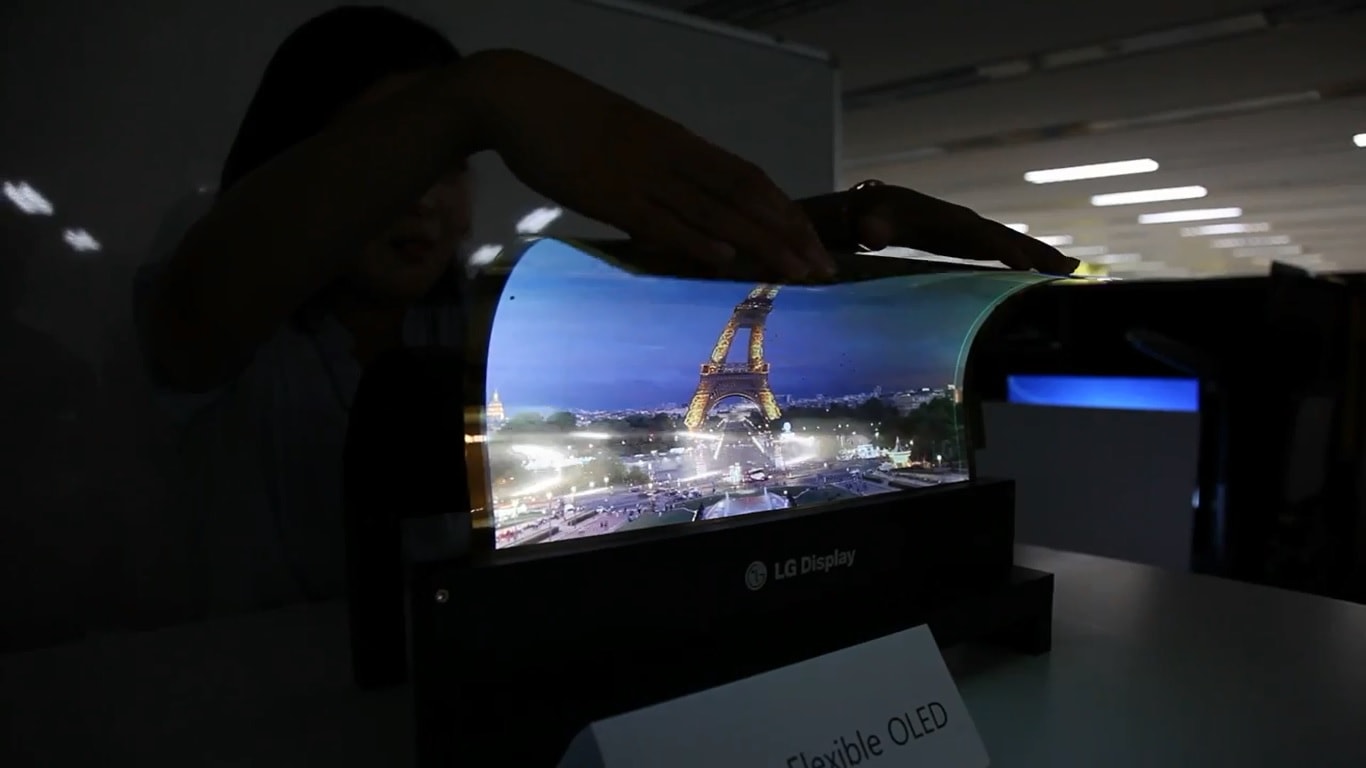
New Technology
Now, we have the LG Display flexible OLED screen. It is the first rollable screen. The large sized mass producible flexible OLED display. The bendable polyimide film (not hard plastic) on the back plane panel. It has an 18 inch high resolution screen and it can roll into an one inch wide tube. LG wanted to develop an ultra HD flexible monitor that’s greater than 60 inches by 2017.
Charles Q. Choi is a Live Science Contributor. In his June 29, 2016 article entitled, “Lab Grown Living Bones Could Yield Customized Implants” described about this reality of how pieces of living bone has been grown from the cells of patients. This technology is being used to sculpt to replace missing anatomical structures. Researchers have used custom engineered bone to repair a pig’s lower jaw. The pig’s jaw is one of the strongest and most complex jaws in the face. Researchers believe that this development could pave the way for bone repairs elsewhere in the body. Bones are complex. Since bones can be difficult in finding natural replacements, surgeons use titanium and other artificial implants. Yet, these implants lack bone marrow. Bone marrow can help generate red blood cells and immune cells. Patients receive blood and there is the risk of tissue rejection. Also, some doctors can harvest bone from another part of the patient’s body, but this can lead to extreme pain.
Now, scientists hope to grow living bone in the lab. They experimented with pigs since the pig’s jaw anatomy and mechanics mimic closely to those of human beings. The scientists use chunks of cow thighbones and got rid of their cells using detergents and enzymes. They carved the chunks into fits for the pig jaw. Later, the bone scaffolds were merged with pig stem cells (from fat). Later, the implants were placed in bioreactors that supplied the stem cells with oxygen and nutrients. In 23 weeks, the stems cells transformed into immature living bone. "The bone is formed by the recipient's own cells," study senior author Gordana Vunjak-Novakovic, a bioengineer at Columbia University, told Live Science. These there were implanted into the pig’s jaw. 6 months later, the grafts were successfully incorporated into their host bodies and regenerated bone without any complications. This caused the minipigs to use their jaws again according to researchers. Moreover, "unexpectedly, the lab-grown bone, when implanted, was gradually replaced by new bone formed by the body," Vunjak-Novakovic said. "This feature is what makes this implant your own bone that will become an integral part of the native bone." [7 Cool Uses of 3D Printing in Medicine]. "This is a very exciting step forward in improving regenerative medicine options for patients with craniofacial defects, and we hope to start clinical trials within a few years," Vunjak-Novakovic said in a statement. "Having a chance to work on innovative research that may be part of our future is intriguing, energizing, and really inspiring," said study lead author Sarindr Bhumiratana, a postdoctoral fellow at Columbia University, who is also the chief scientific officer at epiBone.
*The scientists are now experimenting with a cartilage layer on their living bone grafts to more closely mimic natural bone. The journal Science Translation Medicine has detailed the scientists’ findings online on June 15, 2016.

TV
Television technology is evolving and changing all of the time. There is OLED TV screen. This screen has a new display technology called OLED (Organic Light Emitting Diodes). The OLED are televisions are brighter, more efficient, thinner, and feature better refresh rates and contrast than LCD or Plasma. OLED has excellent picture quality. OLED stands for organic light emitting diode. So, an OLED is a light emitting diode LED in which there is an emissive electroluminescent layer is a film of organic compound that emits light in response to an electric current. This layer of organic semiconductor is situated between two electrodes. Usually, at least one of these electrodes is transparent. OLEDs are used to create digital displays in television screens, computer monitors, portable system (like mobile phones, handheld game consoles, and PDAs). Since the early 1950’s, André Bernanose and co-workers at the Nancy-Université in France made the first observations of electroluminescence in organic materials. The world’s first organic light emitting diode OLED TV was the Sony XEL-1. It was developed in 2007 and it was produced for sale in 2008. It was at 3 mm making it the world’s thinnest television during its production. At the 2007 Las Vegas Consumer Electronics Show (CES), Sony showcased 11-inch (28 cm, resolution 960×540) and 27-inch (68.5 cm), full HD resolution at 1920 × 1080 OLED TV models. Both claimed 1,000,000:1 contrast ratios and total thicknesses (including bezels) of 5 mm.
In January 2015, LG Display signed a long term agreement with Universal Display Corporation for the supply of OLED materials and the right to use their patented OLED emitters. In February 2015 LG Chemical and Contrast Studio delivered the largest OLED lighting array using 2,850 tiles of LG N6SB30 OLEDs. OLEDs have great picture quality, but their lifetime is not very long. an OLED screen uses a carbon film that sites inside of the panel before the glass screen. OLED panels emit their own light when an electric current is passed through, but cells in an LCD display require an external light source (like a giant backlight for brightness). In an OLED display, the pixels themselves are the things producing the light, and so when they need to be black they are able to turn off completely, rather than relying on a backlight to turn off on their behalf.

Futuristic Cars
Cars of the future will deal with better technology than previous years. Many concept cars are part of the wave of new cars. One futuristic care is called the Alex e-roadster electric car. It will be built in Dunleer Co. Louth, Ireland. It is a very lightweight design with chassis being designed by a specialist composite chassis designer in Denmark. The body panels will also be made from advanced composites the manufactures say. The car will be driven by two axial flux motors driving the rear wheels. The motors will be powered by advanced Lithium-ion battery modules stored in a compartment underneath the floor of the car. Top speed will be in the range 130-135 kph. Expected range is 300 km. It will also feature a quirky combined roof and doors canopy to allow easy entry and exit from the car. The makers say that it saves a lot of weight by combining both doors with the roof. A prototype is expected to be available in early 2017 with the first car going on sale in late 2017. There is the Hyundai Portico that is a full size crossover SUV larger than the Santa Fe and Veracruz. It will share the Sonata platform. In terms of technology, our technology went from the steam engine, to internal combustion, jet propulsion, and so forth. Just 10 years ago, cars had built in Bluetooth, navigation, and parking sensors. Today, even affordable cars have such devices on them. Some predict autonomous driving will be more common by 2026.
Etc.

Conclusion (Attica)
The rebellion in Attica took place in September 9, 1971. It has been 45 years since the events in Attica started. Also, during the time of 1971 saw the harsh war of Vietnam and the anticolonial movements of the world growing. Back then, the civil rights and black liberation movement was in a new era after Dr. Martin Luther King Jr.’s evil assassination. Many black people were in the fight. Reactionaries promoted the “get tough on crime” rhetoric when many of those “anti-crime” policies violated civil liberties &other human rights. Richard Nixon was President of the United States and he used policies to illegally suppress social activist groups like the Black Panthers, anti-war groups, Native American rights organizations, and labor rights organizations. By this time, inflation increased. The Governor of New York State back then was Nelson Rockefeller. The prison industrial complex back then was filled with corruption, human exploitation, horrible conditions, and a sense of carnage. Also, revolutionaries in the prison system wrote literature and spoke up for not only the improvement of conditions in prisons. They desired revolutionary change for the oppressed in general, so liberation can happen. Over 1,000 prisoners took over the prison yard in Attica and issued demands for real changes.
4 days later, state authorities ended the uprising in a deadly show of force. An investigatory commission later called it the “bloodiest encounter between Americans since the Civil War.” The events of Attica showed the brutality of the prison industrial complex up close and personal. It also represented the courage of those who abhorred inhuman treatment. People, from across racial lines, united to fight against human exploitation. We are inspired by those in Attica. Regardless of where we live, we are still human beings. Human dignity and human decency are great concepts to advance in any society. Back then, prison strikes were common and many prisoners created truces along racial lines in seeing that the capitalist oligarchy was responsible for the unequal, oppressive system that we witness in the world today. The Attica rebellion took great influence from the work of Brother George Jackson. George Jackson was a Black Panther and he was in prison. He wrote literature to criticize capitalist exploitation and the harsh conditions of prisons nationwide. Two of his very famous books are "Soledad Brother" and "Blood in My Eye." George Jackson was killed in an event in prison. After that, many prisoners nationwide couldn’t take the abuse and the mistreatment anymore. Soon afterwards, the Attica Rebellion happened.
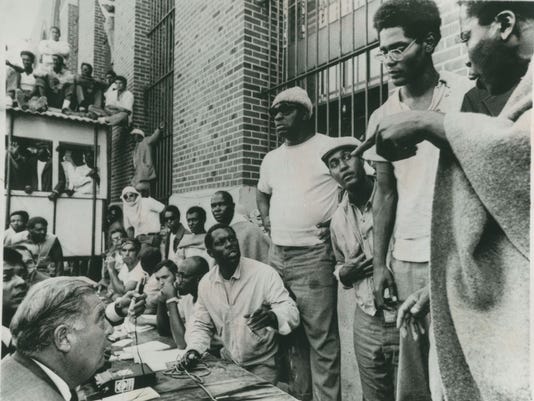

Many prison strikes existed before Attica. There were 2 successful “unity” strikes at California’s large San Quentin prison in 1968 and in 1970. Many multiracial strikes took place in New York City jails and in Soledad, Folsom, and San Luis Obispo prisons in California. A work stoppage in November at Folsom lasted for 19 days, which was the longest prison strike in U.S. history.
Today, it has been 45 years since the rebellion in Attica. August 21, 1971 was the date when George Jackson was murdered at San Quentin. He studied Marxism in prison. He was shot in the back by prison guards. They claimed that he was trying to escape, but others adamantly disagree with that accusation. Many expressions of outrage happened in prisons and outside of prison over the murder of George Jackson. Attica (which was built in 1931) is located in upstate New York outside of Buffalo. Attica back then had medical attention being denied often. The food was bad and sanitation was horrific. An all-white force of prison guards abused the inmates (who were predominately African Americans and Puerto Ricans. The guards deliberately provoked racial animosities). Prisoners were allocated one roll of toilet paper a month. Muslims were denied the right to hold religious services. Newspapers were banned from the library. Mail was censored. Young people in many cases were in prison for minor infractions. Bail was in high levels. Hardcore lifers were houses with those incarcerated for petty infractions. Many young men in prison were influence by the Black Panthers and the Young Lords. Attica was designed to hold 1,200 men, but it actually housed 2,225 people. First, the prisoners in the hundreds organized a protest for Jackson. They wore armbands and maintained silence throughout the day.
Many people fasted. “We were convinced that he [George Jackson] was murdered,” John Andrini, a member of the Attica Prisoners Negotiating Committee, told the Bulletin following the events in 1971. “The day they buried him, the whole prison population fasted, and I mean all the prisoners--blacks, whites, Indians, Puerto Ricans. They were fasting and the administration was very worried about this. In fact, we were wearing black armbands that morning when we got up and they made us take the armbands off… they were frightened to see how well we could get together, unite together.” They had already organized against the terrible conditions in Attica. They wanted adequate medical treatment, educational programs, and the elimination of racism of prison guards. In July of 1971, the Attica Liberation Faction submitted a petition to prison officials. By September 2, a prisoner representative managed to win an in-person meeting with the state Department of Corrections Commissioner Russell Oswald. Yet, Oswald left the facility with no concessions. This angered the prisoners when he delivered only a pre-recorded message that he would look into the situation.
On the morning of September 9, prisoners managed to free a prisoner who had been ordered to his cell by guards. When guards tried to get control of the protest, protesters broke down gates and flooded into the main yards. Almost 1,300 prisoners took over the yards. They quickly issued demands. They organized security, food distribution, and the running of the D-yard. The prisoners took 40 hostages, most of whom were guards. They remained under guard and they were protected by the prisoners throughout the uprising. During that afternoon, the demands of the Attica prisoners were read out loud by L.D. Barkley (when a 21 year old prisoners). He prefaced the demands with this statement:
“…The rebellion of inmates at Attica is part of the long struggle of people demanding that their basic needs be met...[Gov. Nelson] Rockefeller's response to their demands has shown his willingness to commit genocide and kill his own people in order to save the system that keeps him rich...We are men! We are not beasts and do not intend to be beaten or driven as such. The entire prison populace has set forth to change forever the ruthless brutalization and disregard for the lives of the prisoners here and throughout the United States. What has happened here is but the sound before the fury of those who are oppressed...We call upon all the conscientious citizens of America to assist us in putting an end to this situation that threatens not only our lives, but each and every citizen as well…”
On the first day of the standoff, the prisoners released prison guard William Quinn, who was severely injured in the original fight, and 11 other injured hostages so that they could get medical help. The prisoners set up an elected representative council to be spokesmen in the negotiations. They also established a protective human chain around the hostages and called for a group of outside observers to assist in the bargaining over grievances. Thirty-three people participated in this group, including New York Congressman Herman Badillo, State Assemblyman Arthur Eve, civil rights attorney William Kunstler, and Tom Wicker of the New York Times. A series of 31 demands were drawn up, 28 of which Oswald eventually agreed to. The prisoners demanded complete amnesty, transportation to a non-imperialistic country, and a team of negotiators to include the progressive lawyer William Kunstler, New York Times reporter Tom Wicker, and representatives of the Black Panther Party, Young Lords, and the Urban League, among others. The demands were followed by "practical proposals" that included freedom of religion, political expression, an end to segregation and the state minimum wage law for prisoners. The leaders of the uprising were demonized by Rockefeller and the Nixon administration as extremists.
Many people (back then and today) don't want the prisoners to have any fundamental rights. The prisoners later created a democratically elected council in order to negotiate with authorities. They wanted to organize themselves in the yard. One rebellion leader was Frank “Big Black” Smith who was the head of security of the uprising. He said that each person had a task from giving food to people and handling security. Arthur Eve was an African American state senator back then. He said that the prisoners created an elaborate communication system. He said that the people in the yard had discipline. The prisoners wanted to inspire international change. They knew that the struggle for justice wasn’t just national, but internationally too. Herb Blyden was one of the leaders of the rebellion. He said the following words: “…Brothers! The world is hearing us! The world is seeing our struggle! Look at these men [the team of observers] from all over this country, coming here at our call, brothers--coming here to witness firsthand the struggle against racist oppression and brutalization. We got to show them so they can tell the world what goes on behind these walls! We are standing here for all the oppressed people of the world, and we are not going to give up or knuckle under--we are going to show the way! For we have the way!”
The Attica prisoners expressed solidarity with those fighting imperialism globally from those in Vietnam, etc. 60 of the Attica prisoners sent a statement of revolutionary solidarity to the Native Americans at Wounded Knee. One negotiating team member Tom Wicker said that the prisoners fought against slavery and brutality. Attica received worldwide attention. The prisoners and their supporters made little progress in the negotiations with prison authorities. Oswald refused to give the prisoners amnesty. Police started to mass outside of the gates.
Rockefeller rejected many requests to meet with the prisoners at Attica. Oswald then gave the green light to strike and re-take the prison. On the morning of September 13, 1971, the uprising came to an end. This was when Rockefeller ordered a Vietnam style assault by helicopters, state police sharpshooters, and prison guards to retake the prison by force. The police using gunfire and clouds of tear gas dropped from helicopters to the prison. Surrendering prisoners were beaten and tortured by police and prison guards wielding clubs, chains, screwdrivers and other weapons. Men were marked with “X”s on their backs and threatened with castration by vindictive prison guards. These attacks behind the prison walls went on for days. According to Time magazine: “A team of doctors who treated prisoners in their cells later said inmates in widely separated parts of the prison described in identical detail instances of ‘indiscriminate’ firing by the officers and the calculated slaying of unresisting convicts. Reported Dr. Lionel Sifontes of Buffalo: ‘Many of the ringleaders were approached by guards and shot systematically. Some had their hands in the air surrendering. Some were lying on the ground.’” Autopsies the next day showed that none of the lurid claims of executions or castrations were true. All but one of the deceased hostages were killed by the state assault.
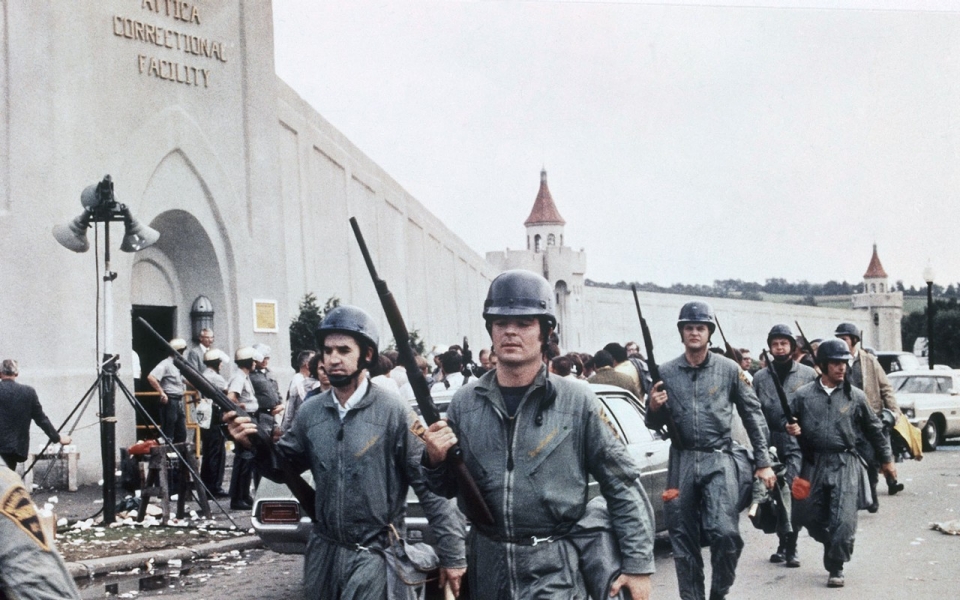
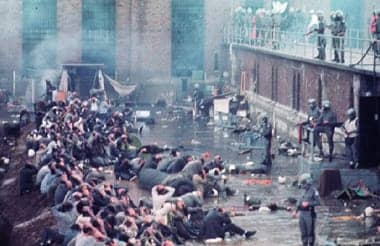
Kenneth Malloy, a wounded prisoner, died when a trooper fired five rounds from his revolver into his eyes from a distance of one foot. James Robinson lay dying from a bullet in his chest when a guard fired into his neck from a few feet away. Witnesses later described several men bleeding to death because prison officials kept them away from medical personnel. Cell Block D, the scene of the uprising, was gassed and upwards of 3,000 rounds of ammunition were indiscriminately fired into the melee. This was police terrorism plain and simple. Frank “Big Black” Smith was severely beaten. He was forced to lie naked on a table in Attica yard all afternoon. He had a football balanced on his chest--he was told he would be castrated if the ball fell. As he later described in a lawsuit against the state:
“. .They ran me through a gauntlet. Everybody had to go through that, with glass broken on the floor. Five officers beat me and broke my wrist and opened my head up and knocked me just about out. They took me to a room next to the hospital, laid me on the floor, spread-eagled me, and played shotgun roulette with me. Then they took me and dumped me on the floor in the [prison] hospital…”
The state police caused 29 prisoners and 10 hostages to be dead. 89 people were wounded. The newspaper once said that the hostages’ throats had been slit. Yet, medical examiners later said that no hostages died by the prisoners’ hands. This repression was evil and the authorities feared the revolt spreading. Then New York Governor Rockefeller would support the re-election campaign of Nixon in 1972. Rockefeller wanted to escape the notion that he was a party liberal by unleashing the massacre at Attica. Rockefeller publicly commended the state police as doing a “superb job” which is a total lie. The uprising was suppressed by the state police. It reflected the social and political crisis of American imperialism during the height of the anti-Vietnam War movement. There was a militant strike wave by industrial workers during this time and the aftermath of the urban rebellions of the 1960’s. University of New Hampshire at Manchester Professor Theresa C. Lynch recently released to the public recordings of conversations between President Richard Nixon and Rockefeller that occurred in the immediate aftermath of the killings. These tapes corroborate the analysis of the Workers League: the slaughter at Attica was not a mistake or overreaction. It was a calculated political response to what was considered an intolerable challenge to the authority of the capitalist state. The tapes documented the racism in the highest levels of the American political establishment. Nixon considered the rebellion as a “black thing’ and wanted Rockefeller to control the black population. The Attica rebellion consisted of people among many races. Only in 2000 did the courts finally declare that inmates were “treated like garbage” and award $8 million to families of surviving inmates and hostages.
Many prisoners were charged in connection with the uprising, and two were convicted in the death of a guard. But in 1976, Gov. Hugh Carey pardoned prisoners who had pled guilty. Not a single trooper or correction officer was ever tried for wrongful death or torture at Attica. In 1974, a class action civil rights lawsuit was filed on behalf of the 1,281 prisoners who were in D-yard the morning of the retaking. Finally, in 2000, New York State awarded $8 million to the prisoners and their families. The repression against the prisoners in Attica was against the black power movement and other liberation movements too. There have been more rebellions in prisons. State violence and repression influenced the decline of some parts of the prisoner rights and black liberation movements. The prisoner resistance movement caused some reforms. Prison educational programs increased. Some basic conditions improved. Education programs grew from non-granting degrees in 1965 to 350 educational programs granting degrees in 1982. Yet, the more things change, the more that they stay the same. There is the growth of the prison industrial complex and the war on drugs too since 1980. Both Republican and Democratic politicians have promoted War on Drugs policies. We have a massive counterrevolution where there are economic problems and a decline of American capitalism in general. There are over 2 million people in prison in America, which is the largest prison population than any other nation on Earth. In December 2010, there was a strike in Georgia prison. They wanted liberty. Prisoners continue to protest too. There was the Pelican Bay prison hunger strike recently.
We want racial and social justice.
By Timothy